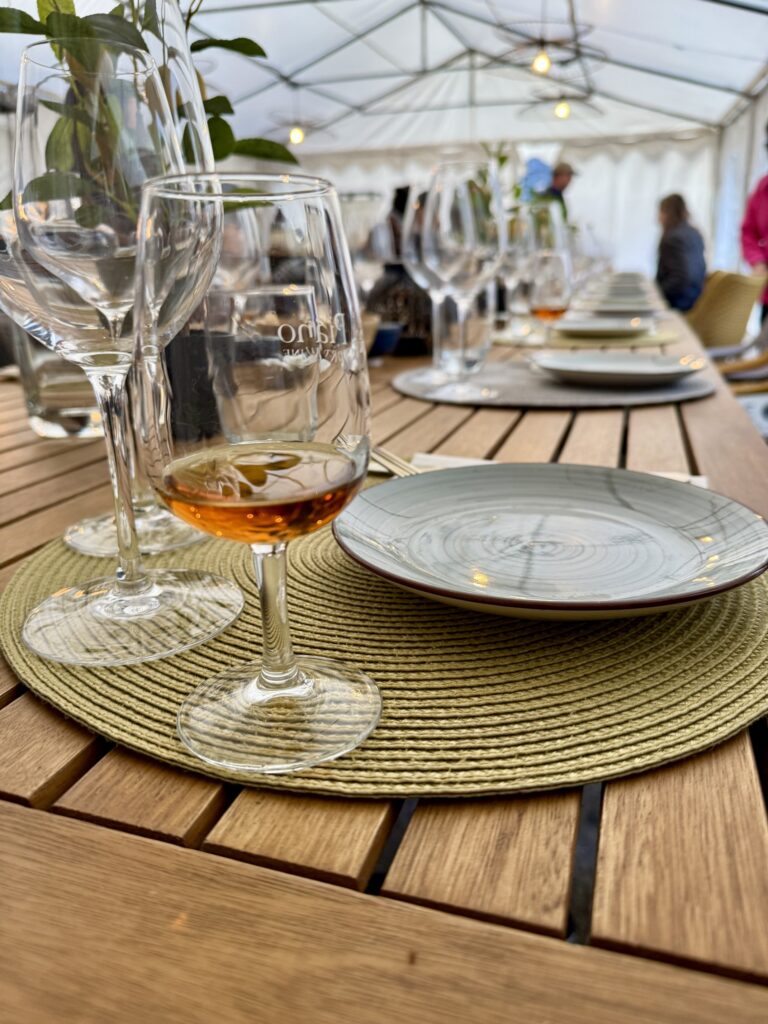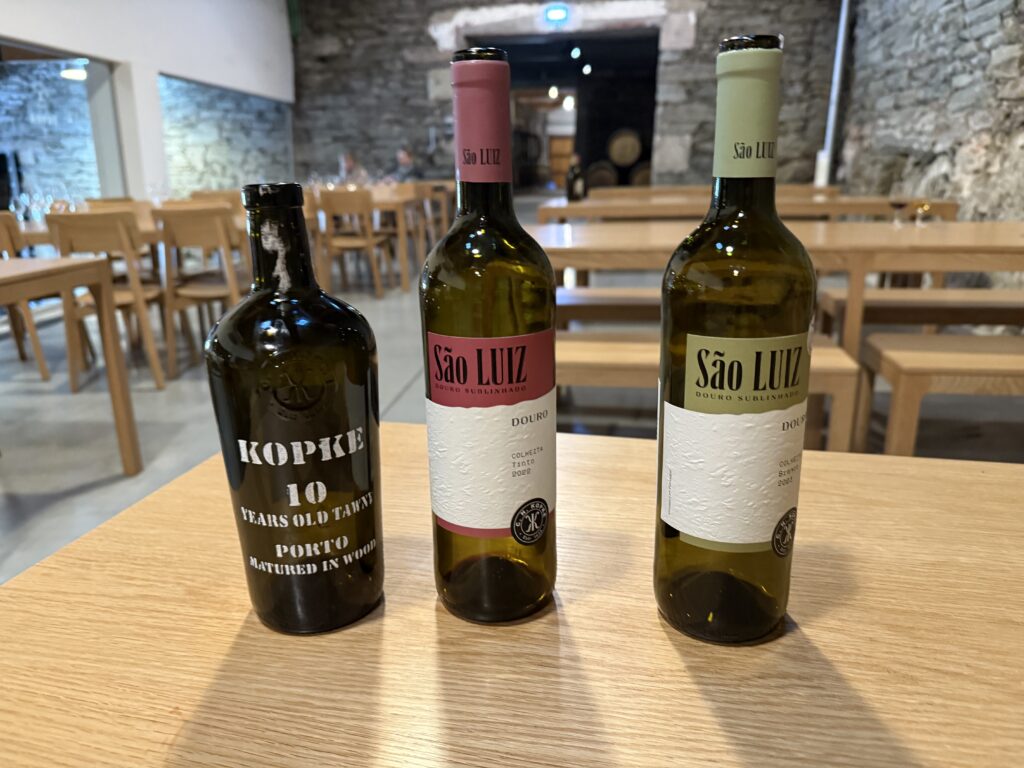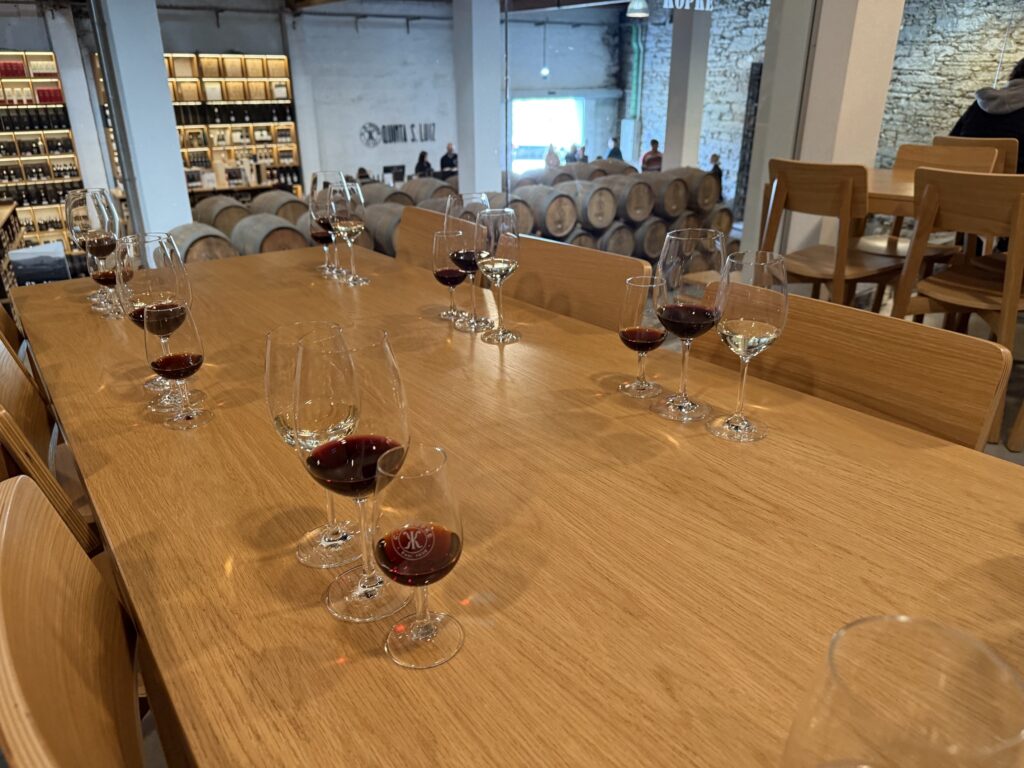
Port Wine Portugal- The History of Port Wine
 April 25
April 25
 14 min read
14 min read

Port Wine Portugal- Key Highlights
- Port wine, a sweet fortified wine, originates from the Douro Valley in Portugal and is renowned globally for its rich history and flavor. In this article, we will explore the history of Port Wine Portugal.
- The history of Port wine intertwines with international trade, influenced by English merchants and the establishment of iconic Port houses.
- Over time, diverse styles of Port wine, like Ruby, Tawny, Vintage, and Late Bottled Vintage, have evolved, each offering a unique taste profile.
- The Douro River and Gaia caves play an indispensable role, providing a method of transport and a perfect environment for aging this special wine.
- Modern viticulture and enology continue to be shaped by innovations in Port wine production, solidifying its influence on the global wine market.
Introduction
Port wine is a popular sweet fortified wine that comes from the beautiful Douro Valley in northern Portugal. Surrounded by rolling hills and terraced vineyards, the history of Port wine and its white varieties is as rich as its taste. This drink has delighted people around the world for centuries. It started from simple beginnings and grew into the well-regarded Vintage Port we recognize today. Come along as we explore the fascinating story of port wine Portugal.
Origins and Early History of Port Wine
The story of Port Wine is closely linked to the history of the Douro Valley, a UNESCO world heritage site. Winemaking has been part of this area since Roman times. However, it was in the 17th century that the world, particularly in Europe, really started to notice the unique wine from this part of Portugal.
English traders were looking for a substitute for French wines when there was political trouble. They played a big part in creating Port wine as we know it now. The need for a strong wine that could travel by sea to England led to adding brandy to local wines. This method not only made the wine stronger but also gave it its well-known sweetness and depth.
The Inception of Port Wine in the Douro Valley
The Douro Valley, shaped by the winding Douro River, soon proved to be the ideal place for this fortified wine. Its steep hills, schist soil, and special climate all worked together to create outstanding grapes. These grapes had the power to make wines that stand out with their unique character.
As the 18th century went on, the famous wines from the Douro Valley began to be called Port wine. Their reputation grew, especially in England, where the demand grew a lot. During this time, rules and boundaries started to form, which helped shape the future of the Port wine industry.
The Douro Valley became one of the first wine regions in the world to use the idea of “vintage.” This practice, marking the great harvest of a specific year, made Port wines and table wines more special and added more prestige to these wonderful drinks.
Influence of International Trade on Port Wine Development
The story of Port wine is closely linked to international trade and political events, including those involving Churchill. When tensions rose between England and France, English merchants needed new places to find their favorite wine, including options from the Algarve. They turned to the Douro region in Portugal.
Seeing the potential of the wines from this area, the English set up trading posts in Porto. This coastal city is located at the mouth of the Douro River. These trading posts allowed them to ship their fortified wine back to eager customers in England. The shipping routes were so significant that the name “Port” came from the place where it all began, and it became known as the wine itself.
The link between Port wine and international trade helped it gain a strong reputation worldwide. This trade brought economic growth to the region and established Port as a luxury item enjoyed by people around the globe.

Evolution of Port Wine Styles
The popularity of port wine led to new ideas and experiments in the Douro Valley. Winemakers improved their skills and discovered more about their land. This exploration brought different styles of port wine, each having unique production methods and flavors.
Originally, most port wines were aged in wood, which gave them an oxidized taste. But, newer techniques allowed for both bottle-aged and wood-aged styles. This change created a wide range of flavors that can please everyone.
From Ruby to Tawny: Understanding different types
Navigating the world of Port can be confusing for beginners. It is more than just one drink; it is a type of fortified wine. You can understand this variety better by looking at its different styles. Two of the most famous are Ruby and Tawny Ports, which are each very distinct.
Ruby Ports show off the freshness of youth. They are bright red and have a strong fruit flavor, with taste notes of blackberries, cherries, and plums.
Tawny Ports age in a different way, spending a lot of time in oak barrels. This lets oxygen in, which gives them a nice amber color and nutty, caramel-like flavors. Within the Tawny style, you can find options marked by age, like 10, 20, 30, and even 40-year-old Tawnies. Each age shows a mix of rich smells and flavors.
The Emergence of Vintage and Late Bottled Vintage Ports
The world of Port wine has much to explore, especially with Vintage Port and Late Bottled Vintage (LBV) Ports. These styles can seem a bit mysterious but are considered the best in Port production.
Vintage Ports are only made in great years when the grapes are truly special. They age for a shorter time in barrels, then get bottled and can continue to improve for many years. Often, they reach their best flavor after 20 years or even longer, much like the 1815 Ferreira vintage, which exemplifies the enduring quality of such fine ports.
Here’s how Vintage and LBV Ports are different:
- Vintage Port: This port is made from the best grapes of one declared vintage year. It is bottled 2-3 years after aging and needs to be kept for 20 or more years before serving. Decanting is also needed.
- LBV Port: This type comes from a single year but is not always a declared vintage. It is bottled after 4-6 years of aging, so it is easier to drink when it’s younger than Vintage Port. You can enjoy it 5-10 years after it is released, and sometimes it does not need decanting.
Whether you prefer the strong flavor and grace of Vintage Port or the easier-to-drink LBV, both styles are highly loved in the world of Port.
Iconic Port Wine Houses and Their Legacies
Over many years, famous Port houses, including Quinta do Crasto and Croft, have started along the Douro River. Each house adds to the legacy and fame of this special wine. These old names do more than just make wine; they keep traditions alive, bring new ideas, and are key parts of the Port wine history.
From the innovative spirit of Taylor’s to the unique style of Sandeman and the esteemed legacy of Osborne, each Port house shares a special story and its own ways of doing things. This makes the world of Port even richer and helps it stay a valued treasure worldwide.
Taylor’s – Pioneers of Age-Indicated Tawnies
Taylor’s, which started in 1692, represents tradition and quality in the Port world. This house is famous for being the first to develop and popularize age-indicated Tawny Ports. Before this change, Tawny Ports were usually mixed, so it was hard for people to know their age or taste.
Knowing that consumers needed better options, Taylor’s created a way for Port fans to easily find and choose Tawnies by their flavors. This led to the creation of their well-known 10, 20, 30, and 40-year-old Tawnies.
With these age-indicated Tawny Ports, the way we enjoy and understand these wines was changed forever. It also raised the quality of these wines, showing how rich and complex flavors can be achieved through careful aging. Today, Taylor’s and Graham’s still lead in Tawny Ports, and their focus on quality and tradition is clear in every taste.
Sandeman – The Story of the Don
Few images are as well-known in the world of Port as the silhouette of The Don, the caped figure used in Sandeman’s branding. Founded in 1790, this port house mixed great winemaking with eye-catching marketing, which helped them become famous worldwide.
The Don is a unique character dressed in a Portuguese student’s cape and a Spanish sombrero. He was created in the 1920s to leave a strong impression on buyers. The campaign worked well, making Sandeman a well-recognized name and showing that they produce quality and sophisticated wines.
Today, Sandeman Wine Cellars still creates many types of Port. They appeal to both those who know a lot about wine and to beginners discovering this special drink. Their selection includes classic Ruby Ports and Tawny Ports, as well as their prestigious Vintage Ports, often showcased in the tasting room. Sandeman keeps its legacy alive while also embracing new ideas.

The Role of the Douro River and Gaia Caves
The Douro River is very important to the Douro Valley. It does more than just look pretty in the story of Port wine. For many years, it was the main way to transport valuable barrels of wine. These barrels traveled from steep vineyards down to Vila Nova de Gaia.
The cool and humid air in the Gaia caves, part of the Sogevinus group, is right across the river from Porto. This special environment is great for aging Port wine. It is inside these caves that the wine changes and grows richer in flavors and aromas.
Transport and Aging of Wine Along the Douro
The Douro River, with its pretty curves, used to be a big challenge for moving Port Wine, especially for estates like Quinta do Bomfim. Long before we had modern roads and trains, the river was the only way to get this special drink from the tough mountain area of the Douro Valley to the city of Porto.
Barrels were carefully loaded onto traditional Rabelo boats. They went on a risky journey downstream. These strong boats were built to handle the river’s shallow areas and fast water. They carried the hopes of many winemakers and were important for the region’s economy.
The trip was not easy. Changes in temperature during the ride added to the wine’s unique taste. Even now, most wine is transported by trucks, but the charm of the river is still there. It reminds us of the effort people put in to enjoy this amazing Port wine.
How Gaia’s Cellars Perfect the Aging Process
Once ashore, the aging process of Port wine continued in the cool, damp cellars of Vila Nova de Gaia, where you can also enjoy Quinta do Noval port wine tasting. This area is right across the Douro River from Porto. It has perfect conditions for aging this special drink. The steady temperature and humidity in these caves help the wine age slowly and develop its flavor.
Generations of knowledge and tradition are found within the walls of these Gaia cellars. Here, cellarmasters carefully watch the aging process and ensure the maximum storage duration for the wines. They taste and blend the wines to create the flavors we love. These cellars, some over a hundred years old, not only hold barrels of Port wine but also many stories of the people who have worked hard to make this famous drink.
Visiting these historic port wine cellar Gaia cellars is truly a unique experience. The air is rich with the scent of aging spirits. The only sound you hear is the occasional drip of water. It feels like stepping back in time. You get to see the traditions that have made Port wine the cherished drink it is today.
Port Wine in Modern Times
The story of Port is based on old traditions. At the same time, the industry is changing and trying new things while keeping its heritage.
Today’s growing methods and new technology help producers learn more about their vineyards. This knowledge allows them to make better choices when making wine. This balance of tradition and new ideas ensures that Port will remain a top-quality wine for many years.
Innovations in Production and Global Distribution
The world of Port wine keeps changing. While sticking to old traditions, producers always look for ways to make their wine better. They use new techniques, such as precision viticulture, to watch over their vineyards closely. This helps their vines stay healthy and produces better grapes.
There are also new methods in winemaking. Controlling the temperature during fermentation, using different kinds of oak, and having advanced bottling lines all help to make even better Port wines.
Now, the way Port wine is shared around the globe makes it easier for fans everywhere to enjoy this special drink. England and a few other European countries still buy a lot of Port, but new regions like North America and Asia are starting to enjoy it too. This brings unique flavors of Port to more people who want to explore its rich variety.
Port Wine’s Impact on Modern Viticulture and Enology
The impact of Port goes beyond just one drink. Its special way of making wine and aging has helped improve wine growing and making. This change has affected wine production not only in Portugal but all over the world.
To make great Port, producers know that managing the vineyard is very important. The steep hills of the Douro Valley, which used to be hard to manage, now use modern vineyard practices, especially as the season changes in September. This includes terracing, cover cropping, and careful pruning to make the vines healthier, leading to better quality fruit.
The world of Port wine is all about new ideas. Through research and teamwork among producers, universities, and research centers, they are looking at new grape types that fit the changing climate. This drive to create the best Port wine keeps pushing the limits.

Conclusion
Port wine Portugal has a long history and comes in many styles, which is why many people go on port wine tours. It has been shaped by tradition and new ideas over the years. The Douro Valley is where this wine starts, and it is enjoyed around the world. Each sip of Port wine, including those from famous houses like Ramos Pinto, shows craftsmanship and culture. Famous wine houses like Taylor’s and Sandeman are known for creating excellent wines. Modern methods mix with old-school techniques to keep Port wine classy and tasty. Whether you drink a vintage Port or an aged Tawny, every bottle shares a story about the land and the time it came from. Let’s raise a glass to the history and future of Port wine, showcasing the art of winemaking.
Planning a visit to Portugal? Check out my Complete Travel Guide!
Frequently Asked Questions
What is the Oldest Port House in Porto?
The oldest port wine house, Fonseca, is actually in Vila Nova de Gaia, which is across the Douro River from Porto. It was founded in 1638. This makes Kopke the oldest port wine house known.
How Does Vintage Port Differ From Tawny Port?
Vintage Port is created during great years. It is aged for a short time in wood and is made to be stored for many years. Tawny Port, on the other hand, ages for a long time in barrels. This gives it a smoother taste and a more oxidized style of colheita Port wine.
Can Port Wine be Paired with Food?
Port wine is often thought of as a dessert wine, but it goes well with many foods. You can enjoy Tawny Port with cheese or nuts. Ruby Port is great with chocolate desserts because its sweetness matches nicely. On the other hand, dry White Port makes a good aperitif.
What Are the Best Conditions for Storing Port Wine?
Port wine needs to be stored like other wines. Keep it in a cool, dark place where the temperature and humidity stay the same. A cellar is the best option if you have one. If not, find a cool and dark spot in your home.
Planning a Visit to Portugal? Explore more of Portugal below:
Portuguese Cultural Traditions
Best Places to Visit in Portugal
Recent Posts
Related Posts
Explore Yosemite National Park: A Nature Lover’s Paradise
Key Highlights Next, let’s dive into what makes Yosemite National Park an unmatched treasure of the United…
Local Favorites: What Food to Eat in California
Key Highlights Introduction California, also called the golden state, is a great place for people who love…
Discover the 20 Best Places to Visit in California Now
Key Highlights Introduction California is a place that has something for everyone. You can find natural beauty…




